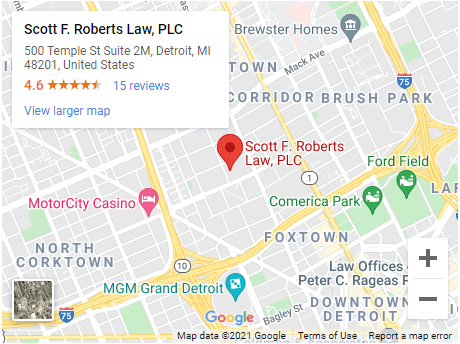Michigan cannabis cultivators have something new to celebrate. The state’s largest utilities, DTE, Consumers Energy, and Lansing BWL – that together make up 90% of the state’s electricity customers – are giving away even more incentive and rebate dollars to businesses that install energy-efficient equipment.
In fact, projects installed as far back as two years ago may be eligible. Eligible equipment includes LED grow lights or LED space lighting, efficient HVAC and dehumidification systems.
Growing cannabis indoors is energy-intensive
Historically, indoor cannabis cultivation – or any indoor crop – uses a staggering amount of power, especially when LED lights are not utilized. For any number of reasons, many cannabis cultivators use 1000W High-Intensity Discharge (HID) fixtures, such as High-Pressure Sodium (HPS) or Ceramic Metal Halide (CMH), to provide their plants with photosynthetic light energy. The enormous heat these powerful fixtures produce, plus extreme outdoor temperatures, put enormous stress on powerful HVAC systems. Add in fans, pumps, reheaters and other electronic equipment, and even a small cannabis grower can easily spend tens of thousands of dollars in utilities each year. For many growers, these utility bills can comprise about a third to a half of their annual operating expenses.
Why your utility wants to pay you to use less energy
Believe it or not, utilities such as DTE, Consumers Energy, Lansing BWL, and other utilities actually want you to use less energy, not more. Because of changes to the utility regulations in 2008, Michigan utilities are financially incentivized to deliver energy savings to their customers, not just more energy. This means that they generally are more concerned with helping you reduce the strain on their electrical infrastructure than selling you more kilowatts and therms.
In fact, these utilities budget millions of dollars annually to encourage their customers to use less energy. Most of this money is earmarked for direct payments to their customers to install energy-saving equipment, such as insulation. However, this does also include rebates for LED grow lights that many Michigan marijuana growers have come to love.
How much money can I get for my LED grow light, HVAC, or dehumidifier project?
Of course, every utility company is going to be different. But as a rule, the more power your project is projected to save compared to an inefficient existing or hypothetical alternative scenario, the greater your rebate check will be. Note that the savings are not just reflected in the amount of energy used by each light as light systems such as HPS also emit substantial heat, which causes increased electricity usage from a facility’s HVAC system as well.
How do rebates work?
Many cannabis cultivation or dispensary energy-efficient technologies may be eligible for a rebate. The main opportunities for growers to make big bucks are to to install a technology that has demonstrated energy-savings benefits, such as:
- LED grow lights
- Highly efficient HVAC systems
- Standalone dehumidifiers
- Building automation systems
- Water conservation and water recapture equipment
- Hallway and office lighting
- LED exterior lighting
- Lighting controls
- Kitchen equipment, and more.
Who is eligible for a rebate?
Any legally-operating business with a commercial electric or gas meter is eligible for an energy efficiency incentive or rebate. Unlike most tax rebates and government sponsored programs, cannabis growers are not only eligible but even encouraged to apply for a rebate!
When should you submit your project application?
In short, as soon as possible! Really, the ideal time to engage your utility around your energy efficiency rebate is before you decide on your final project.
But, incredibly as of this writing, DTE and possibly others are paying out retroactively for projects installed since January 2022. This is unheard of in the utility energy efficiency world and may not last long. If you think you may have installed an energy-saving piece of equipment in the past year or two, reach out to the utility or to a Trade Ally right away.
Another reason not to delay is that the program budget and terms may change from one year to the next. Utilities always re-evaluate their programs, so there is no guarantee that the program will be around next year.
How can a rebate Trade Ally help
A Trade Ally is a qualified third-party partner who can handle all aspects of your application submission. They make sure that the utility has all the information they need to give you credit for all of the savings your project deserves – and get you paid accordingly. Their job is to translate utility-speak into plain English and back again.
Even if you are not required to work with a Trade Ally on your application, it is often advantageous to do so, as they will know the programs well and can help you take full advantage of your rebate opportunities.
How can a Trade Ally help me get my rebates for LED grow light, HVAC or dehumidifier?
A good Trade Ally will spend time with you to understand your project. For example, let’s look at how the Enlighten Your Grow Trade Ally team works with their clients to get them their maximum LED grow light rebate, HVAC rebate, standalone dehumidifier rebate, or better yet a facility-wide rebate.
- They will first meet with you to discuss your overall goals and project objectives to understand how to position your project to earn the most money.
- They will review the program’s terms and conditions with you and make sure that you understand how the program works and expectations for you, the utility, and the Trade Ally.
- They will package your proposed project data to develop a scenario that maximizes your rebate opportunity. For more complex projects, they will build an energy model for your facility proving to the utility how the unique attributes of your design will save you energy.
- They will steer your project through the maze of a utility’s different energy efficiency programs to identify the most lucrative pathway for you.
- They will serve as the point person with the utility, saving you hours of time dealing with utility bureaucrats, often getting you more money than you would on your own and reducing the uncertainty of your incentive check.
- Finally, they will ensure that you get paid as quickly as possible by avoiding common obstacles that slow down the rebate process.
It’s never too early to think about how to get your incentive, but if you wait too long, you may miss your chance.
Sam Milton is the Owner of Climate Resources Group, a company that brings energy and sustainability solutions to growers nationwide. Visit our blog for more information on energy and sustainable for cannabis companies.




